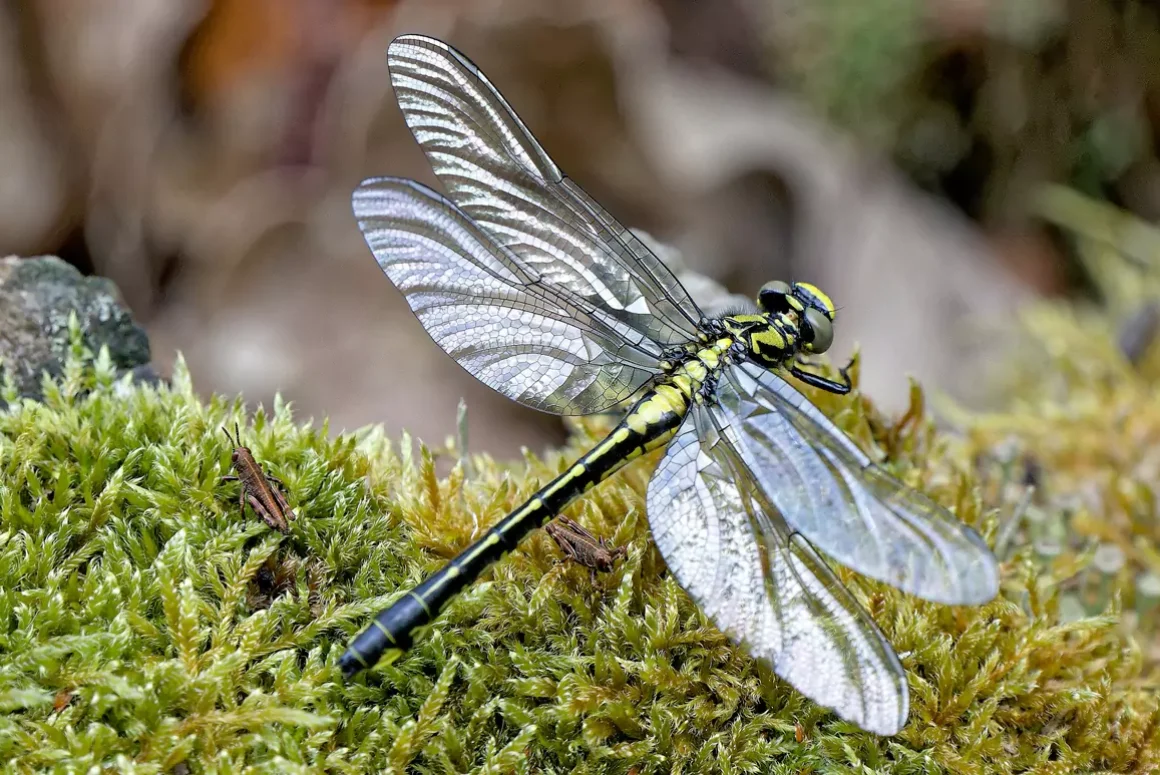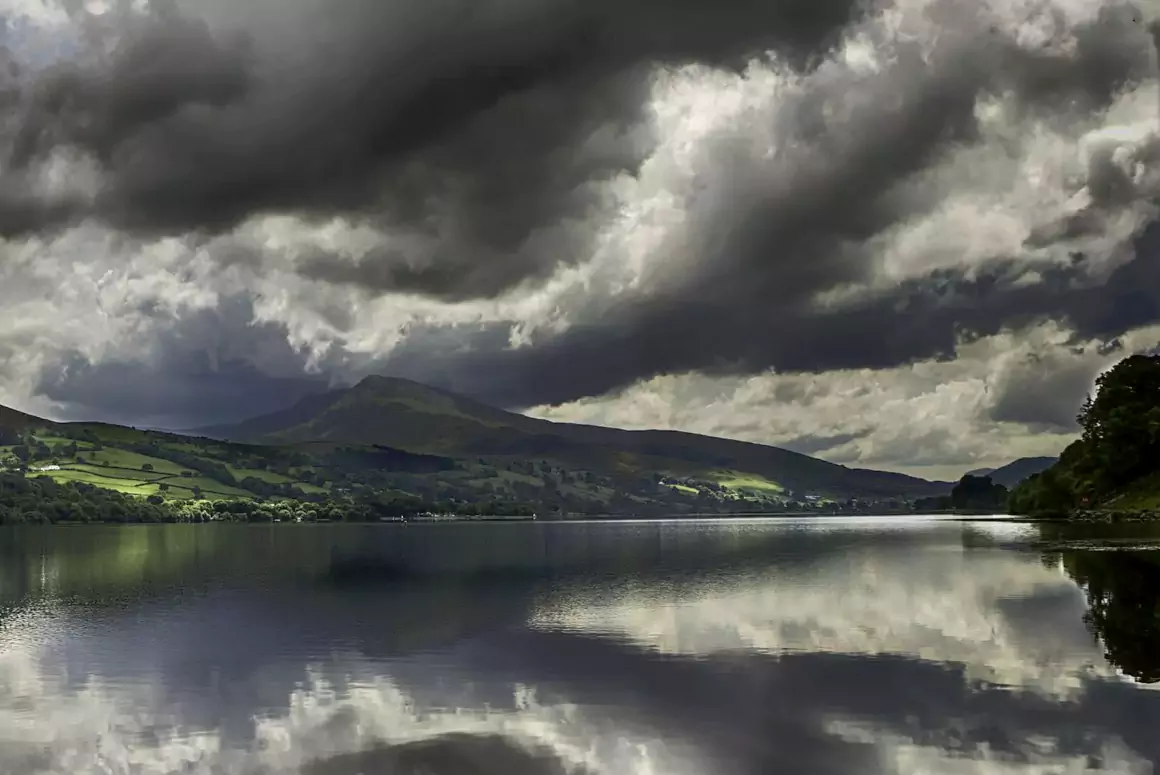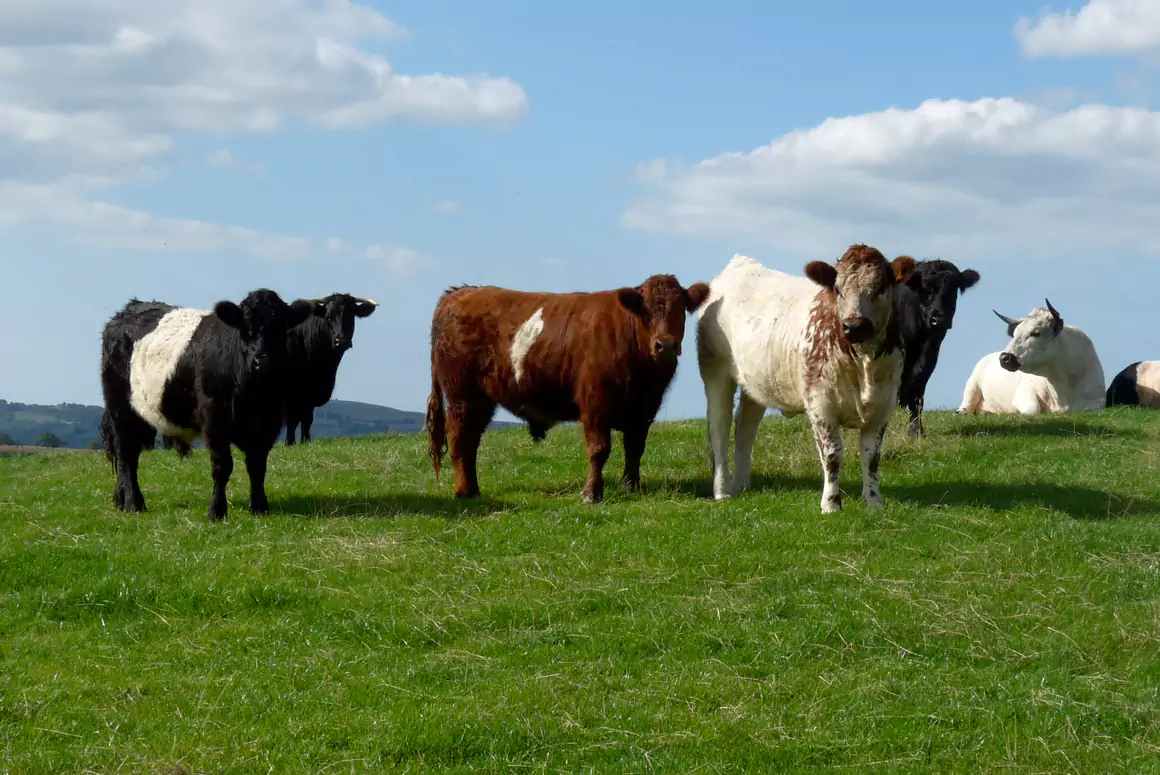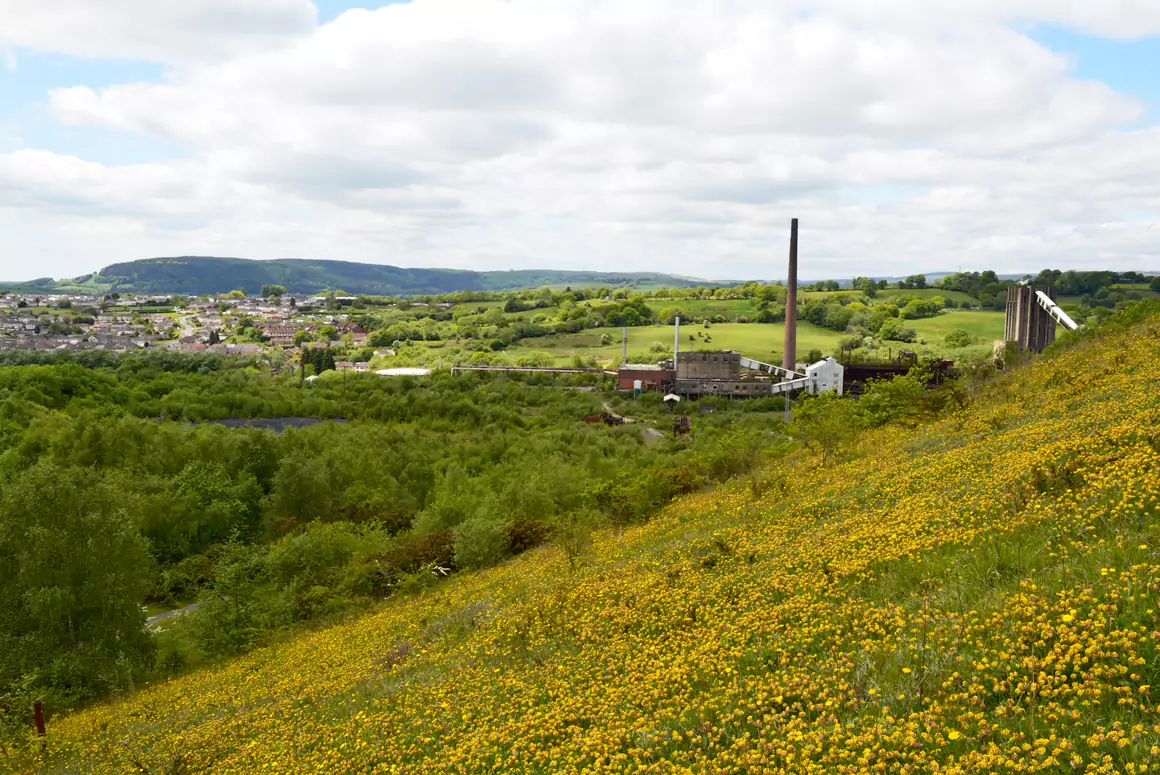![]()
Pat O’Reilly ponders some gardening decisions with unexpected wildlife benefits…
The tale of Jack and the Beanstalk has been told and retold down the ages. Idle dullard Jack can’t be bothered to walk all the way to market to sell his mother’s cow, so he swaps beast for beans and returns home to a furious mum. Now ruined, her meagre assets having been squandered by a wastrel son, in a fit of rage Jack’s mother throws the beans into the garden. Magically a mighty beanstalk grows, and for down-and-out Jack the only way is up. His daft decision leads to mayhem and murder, but it also has an unexpectedly bountiful outcome.
Our own gardening is sometimes a bit like that. Okay, I’ll spill the beans… Inheriting an almost grassless ‘lawn’ rich in rubble and with a spreading goat willow as its unprepossessing centrepiece, we saw dubious drainage as a major problem. Goat willows are good at producing self-sown seedlings, and their roots are brilliant at blocking drains. We could see no positives: the willow had to go. It would leave no great hole in our lives, but a big one in the lawn, and we had no spare soil. Big hole… bad drainage… what about a pond then? Like Jack’s beanstalk it wasn’t what we had planned, but it turned out to be one of the best gardening decisions we ever made.
Two days of healthy hard work and one sheet of butyl pond liner later, and Welsh rain did the rest. Before the pond was even half full, water skaters, whirligig beetles and backswimmers (greater water-boatmen being their other common name) had already taken up residence. In the shallow margins we planted our favourite wetland flowers: water mint, monkey flower, spearwort, fringed water-lily and our all-time favourite, bogbean, a wonderful wildflower of upland acid bogs.
Bogbean flowers are just heavenly, quite unlike other members of the pea and bean family; that’s because bogbean isn’t really a bean plant (family Fabaceae) but a member of the family Menyanthaceae. In the wild this plant is becoming increasingly rare (and if you fancy growing bogbean you must buy your plants from a reputable aquatic plant nursery), but in a garden pond it is so very easy to grow, especially here in Wales where away from the coastal strip most of the soil is more or less neutral or acidic rather than strongly alkaline.
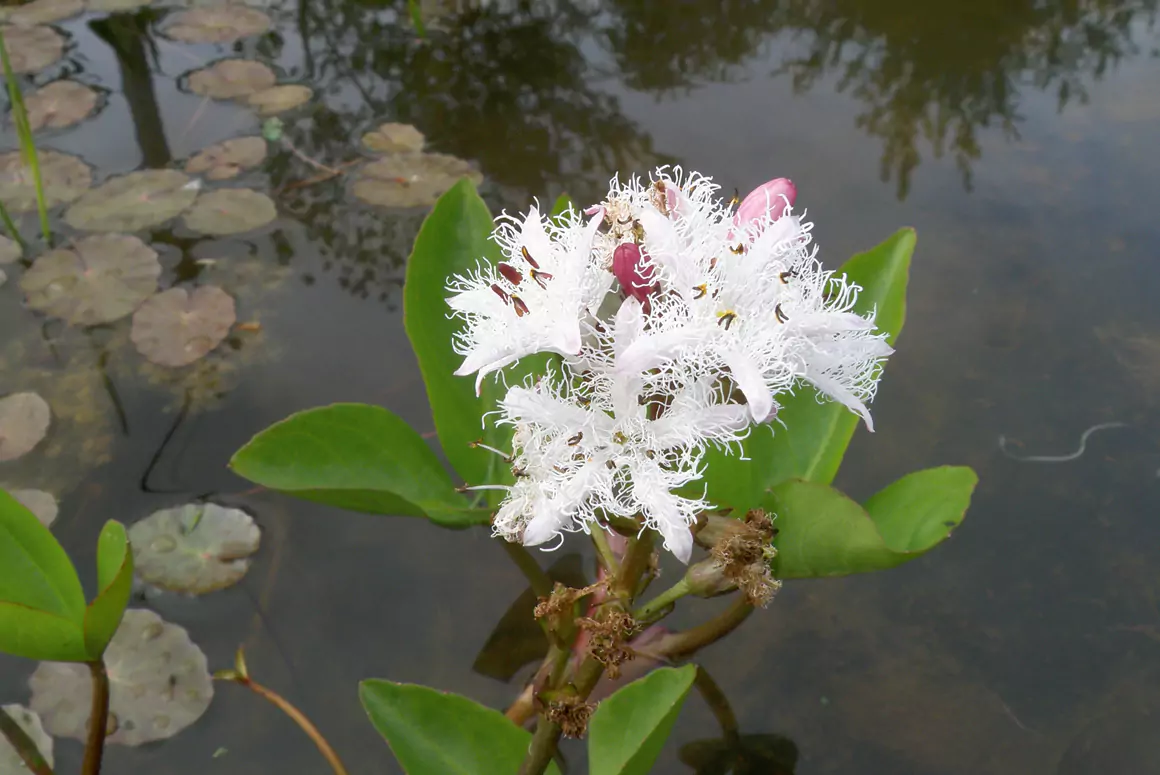
Bogbean propagation is simplicity itself. This plant really is the aquatic equivalent of bindweed: Just chop its underwater stems into pieces and each one produces a new plant. Such a bargain: Buy one, get ten free! In two years you will have enough bogbean to be able to supply all your friends who, by then, will be so envious of your lovely water garden that quite probably they too will be out digging ponds.
As long as you don’t stock it with fish, even the smallest of garden ponds soon becomes a fully functioning and balanced ecosystem, a haven for all kinds of wildlife. There really is no need to import creatures. Frogs, newts and toads will move in to spawn there once they sense that winter is slinking away. These amphibians are soon followed by aquatic insects – dancing pond olive mayflies and gaudy damselflies for example – which reach maturity in a single year, as indeed do most other water bugs that fly about in spring and early summer in search of new accommodation.
Sitting beside a pond, you soon become aware that the springtime peace and tranquillity that you are enjoying is not shared by the other inhabitants. Both above and below the surface, murder and mayhem rule. Big bugs eat smaller bugs that swim in their vicinity; and small bugs eat smaller bugs, and so on to infinity. Dragonflies dart back and forth, seizing pond olives as they emerge from their nymphal shucks to spread their wings in preparation for an ephemeral adulthood that spans barely a third of one percent of their lives.
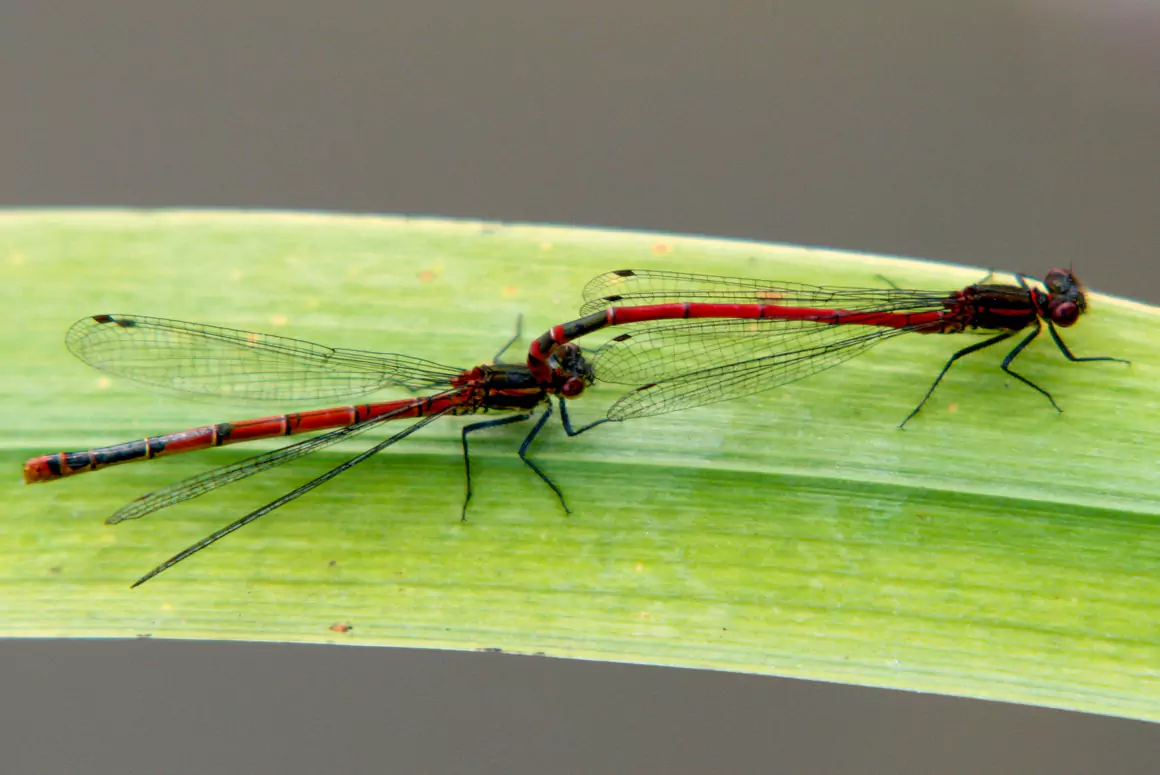
Any garden with a pile of old logs or a loose rockery overgrown with wild vegetation is likely to be home to newts, but come the spring and these fascinating amphibians wander off in search of weed-fringed ponds. There, between April and June, they mate and lay their tiny, jelly-like eggs in folded leaves at the water’s edge. The first newtlets appear in early summer, but from May until at least the end of July you should be able to see adult newts surfacing periodically for air before diving back down to forage and snack on bloodworms and other small silt-dwelling creatures.
No self-respecting newt will settle for a simple snack when a bountiful banquet is in the offing. On sunny days, as damselflies hover in pairs to deposit their eggs on the surface, newts creep along the bogbean stalks, stalking their prey. They move so slowly that you may have a great deal of difficulty spotting them. So do the damselflies… until it’s too late. With alligator agility the newts surge upwards, snapping their jaws at the dipping tails of unsuspecting females, who are instantly sucked down leaving her mates floundering on the surface. The poor male damselflies (how can they expect to be called knightflies when they desert their damsels in distress?) have but a few seconds to break free of the surface and fly off. If they hang around, they’ll be ‘afters’, that’s for sure.
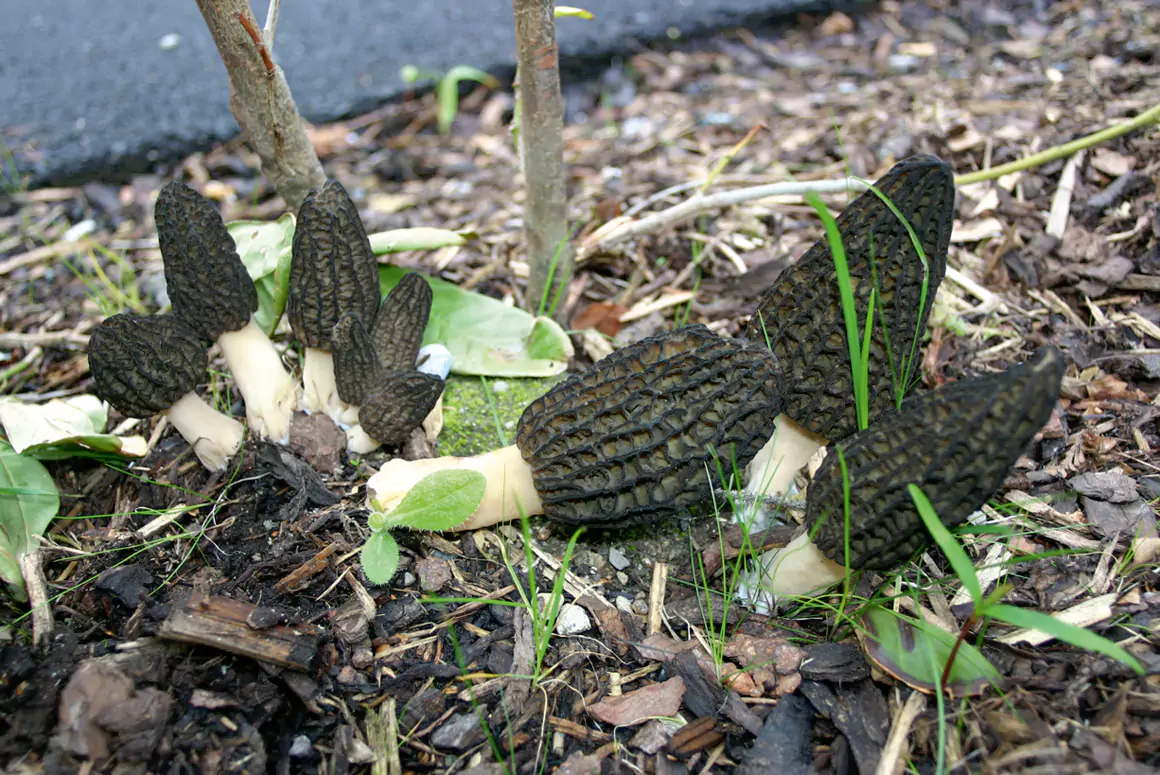
Serendipity rather than morality made lazy Jack a wealthy man. If, to avoid the hard work of continually weeding, you have applied wood chippings or bark mulch to your herbaceous border, you might also be blessed with unimagined riches. While the morals of that folkloric tale may be dubious, you need have no such concerns where any morels (note spelling) on your mulch are concerned. In March and April these white-stalked, honeycomb-capped mushrooms are manna from heaven; they make the most delicious sauces, soups and risottos, quiches and pizza toppings. At this time of year, when morels are on the menu I wouldn’t give a bean for any other mushroom.
Words: Pat O’Reilly | Website: www.first-nature.com
Feature image: Clubtail Dragonfly
First published in Welsh Country Magazine Mar-Apr 2010


